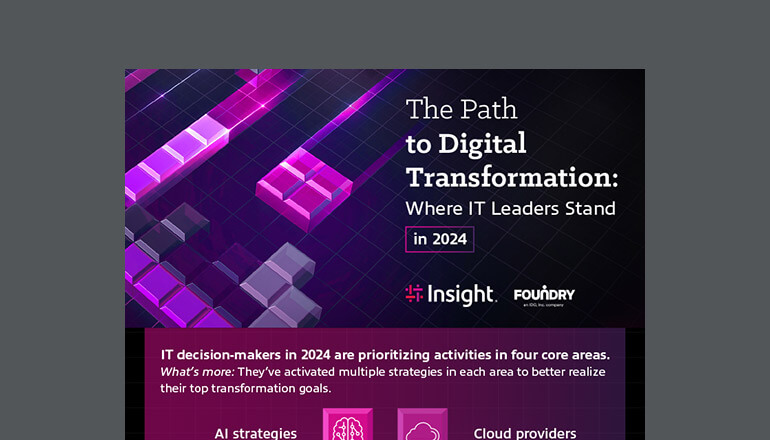Article How Growing Companies Benefit From Technology
Growing businesses are the real powerhouse behind the U.S. economy, driving both job growth and innovation. In fact, according to an Inc. article, small businesses have created 62% of all new private sector jobs since the end of the 2008–2010 recession.
By Steve Solomon / 3 Jul 2019 / Topics: Featured Cloud Intelligent edge

Despite that, these businesses are often stereotyped as “behind the times.” Yet, companies in the small to medium category are just as engaged with technology as major enterprises are, according to findings from a CompTIA report. Let’s examine the technology benefits these companies are finding.
Meeting objectives
Tech-buying decision-makers face a multitude of choices and challenges that could easily lead to a “do nothing” approach. But that hasn’t stopped forward-thinking leaders from embracing technology to aid innovation, help with new products, and recruit and hire talented workers.
In fact, research firm IDC estimated U.S. spending by small to medium businesses on IT products and services topped $186 billion in 2018.
Additionally, the CompTIA survey of 650 small to medium businesses across the United States found that nearly two-thirds (64%) of these businesses successfully rely on technology to help them reach their goals.
What technologies are they buying? Although cloud usage is increasing dramatically, companies still need basic hardware and workstation devices that improve employee productivity. About 36% of their purchases focus on core infrastructure, including:
- Desktops
- Laptops
- Mobile phones
- Networking equipment
- Security software
- Servers
Technology empowers business leaders to achieve their most ambitious goals. No matter the size of your company, technology offers tangible benefits that will increase profit potential and produce the results your customers demand.
Embracing the cloud
The cloud is important to all businesses these days, and growing companies are no exception. Many of them are realizing cloud benefits through outsourced services. The reasons include:
- Reduced costs: The cloud minimizes the need for complex on-site servers and upfront costs.
- Flexibility and reliability: The cloud takes the burden off in-house staff, improves uptime and ensures smooth operations.
- Security: The cloud provides a high level of security to keep company data safe.
Additionally, cloud-based applications are improving operations and customer experience. For example, some CPA companies are using cloud applications to interact more efficiently with customers.
Similarly, healthcare companies have implemented up-to-the-minute telehealth applications to communicate with patients and other providers in remote locations.
The cloud can easily scale to the size of your company while controlling costs and ensuring 24/7 secure access to vital data. Any potential cloud migration growing pains will be easily mitigated by the end result that provides powerful benefits for your growing business.
Exploring new frontiers
Expanding businesses are also seeing the potential of new technologies such as artificial intelligence, 5G and the Internet of Things (IoT). More than half of CompTIA survey respondents say this emerging tech category facilitates greater innovation and efficiency.
Nearly two-thirds (63%) of business leaders ranked higher productivity as the main reason for adoption. They feel these solutions play a key role in reducing costs, improving productivity and increasing revenue.
Another way growing companies are boosting their bottom line is by offering technology services. Approximately half (45%) of CompTIA survey respondents say they’re realizing faster business growth as a result, compared to more traditional product offerings.
Many of these new technologies are becoming mainstream options. They could provide an immediate, noticeable impact on your sales and revenue. That’s why emerging tech should be carefully considered in any future business plans.
Summary
Technology isn’t just a tool for business efficiency; it’s essential to the success of growing businesses — and also opens new revenue streams. Every company, from startups to enterprises, must embrace technology to stay competitive. Permanent changes in productivity are ultimately driven by technological change.


